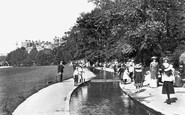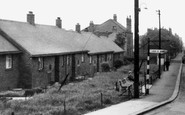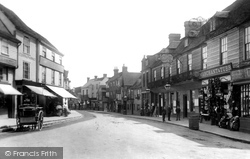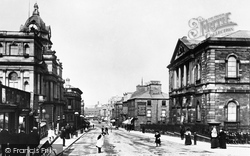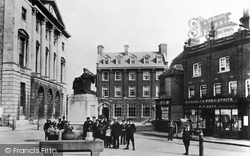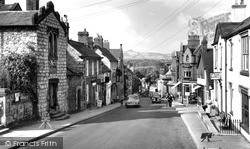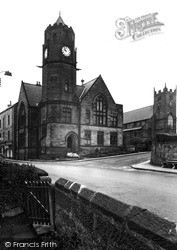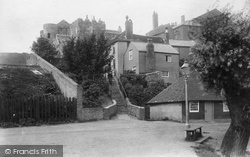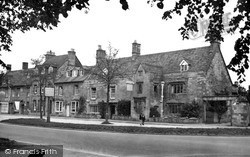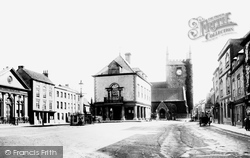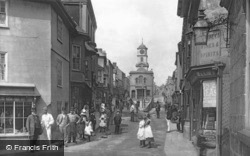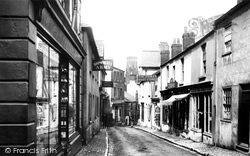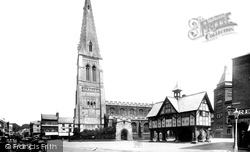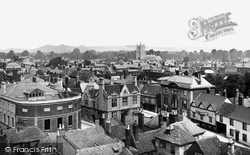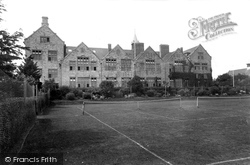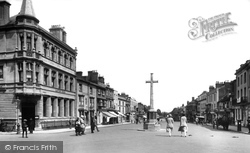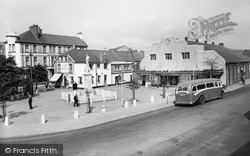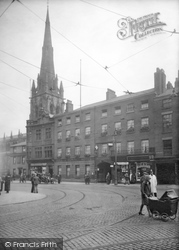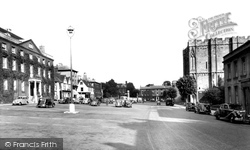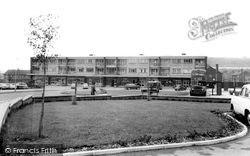Places
26 places found.
Those places high-lighted have photos. All locations may have maps, books and memories.
- Town End, Derbyshire
- Town End, Buckinghamshire
- Town's End, Somerset
- Towns End, Dorset
- Town End, Merseyside
- Town End, Cambridgeshire
- Town's End, Buckinghamshire
- West End Town, Northumberland
- Bolton Town End, Lancashire
- Kearby Town End, Yorkshire
- Town End, Cumbria (near Grange-Over-Sands)
- Town End, Cumbria (near Bowness-On-Windermere)
- Town End, Yorkshire (near Huddersfield)
- Town End, Yorkshire (near Wilberfoss)
- Town End, Cumbria (near Appleby-in-Westmorland)
- Town's End, Dorset (near Melbury Osmond)
- Town's End, Dorset (near Swanage)
- Town End, Cumbria (near Ambleside)
- Town End, Cumbria (near Lakeside)
- Town End, Cumbria (near Kirkby Lonsdale)
- Town End, Cumbria (near Ambleside)
- Town's End, Dorset (near Bere Regis)
- West-end Town, South Glamorgan
- Townend, Derbyshire
- Townend, Strathclyde (near Dumbarton)
- Townend, Staffordshire (near Stone)
Photos
23 photos found. Showing results 1,221 to 23.
Maps
195 maps found.
Books
3 books found. Showing results 1,465 to 3.
Memories
3,719 memories found. Showing results 611 to 620.
Bournemouth Gardens
When I was a child, my parents and my two brothers went to Bournemouth every year for 2 weeks holiday. I have nothing but happy memories of Bournemouth and Boscombe and the surrounding towns. I am now nearly 56 but I still ...Read more
A memory of Bournemouth in 1959 by
Corn Exchange
Before the railways (railroads) came, there was no particular reason why people in Bristol, England should keep the same time as people in London. At that time there was no practical way of communicating information about time ...Read more
A memory of Bristol by
Brinton Park
My father used to sell ice-cream in Brinton Park, Dennis Keen was his name. We lived off Hoo Road on Vicarage Crescent. I remember visiting my grandmother on Baxter Avenue, and there was a sweet shop on the corner; does anyone ...Read more
A memory of Kidderminster by
Grandparents
I was in Featherstone at the weekend and visited Cressys Corner as my grandparents lived there in the 1960s. I'm doing our family tree and visited various places in Featherstone. It all looks so different to when I was growing up ...Read more
A memory of Featherstone by
Bristol's Loveliest Church, St Mary Redcliffe.
St Mary Redcliffe Church. Bristol's loveliest church, St Mary Redcliffe, was described as 'the fairest, the goodliest and most famous parish church in England' by Queen Elizabeth I in 1574. Thanks to ...Read more
A memory of Bristol in 1880 by
I Lived There As A Child
I was three when we moved on to Whitehouse Lane, and stayed until I left Codsall Comp in 1974. I loved the town. Anyone who remembers me and wants to get in touch can do so at www.markpsadler.com
A memory of Codsall Wood in 1960 by
Up The Wood
We had no TVs, and there was not much on the radios so we made our own entertainment. One activity was playing up the local wood. We had two woods close to East Howle. One was called the Side Wood and the other was known as the ...Read more
A memory of East Howle in 1950 by
Growing Up In East Ham
My family moved to East Ham from Mile End. We lived on White Horse Road, and I attend Brampton Manor. My brother and sister attended other schools. We used to to the reck centre in Central Park, on Saturdays, it was so ...Read more
A memory of East Ham in 1975
Milnathort A Genteel Place
My sister and I were invited to spend holidays at the home of a very kind lady in Milnathort. Church of Scotland ministers were asking members of their congregations to look after children from 'homes' during the ...Read more
A memory of Milnathort in 1965 by
Knowsley Park
Approximately 1955 to 1959. I remember going to Knowsley Park for the Sunday School 'treat'. We would walk round the town in procession in our best clothes behind our banners. The procession would end in Knowsley Park and we would ...Read more
A memory of Prescot in 1958
Captions
5,054 captions found. Showing results 1,465 to 1,488.
Cranbrook's High Street, entering the town from Hawkhurst, and Stone Street, leading on towards Tenterden and Maidstone, form a L-shape with the tile-hung fascia of the 15th-century George Hotel at
Burnley means 'the place by the river Brun'; the town snuggles in a valley between the rivers Calder and Brun.
As late as 1870, enclosure meadowland and hawthorn hedges stretched away from Wigston, but the ensuing period up to 1900 was to see a trebling of population figures as hosiers and boot and shoe manufacturers
In the terms of his will, however, he left instructions that his estate - which now consisted of Moulsham and Chelmsford - should remain in one piece as it passed to his successive male heirs.
This small city with a population of 3,600 and the smallest cathedral in Britain has an important place in the history of Wales.
The distinctive town hall of Loftus was built by Lord Zetland in 1879 and described as 'Free-Neo-Tudor' with a polygon angled tower.
Built in 1249 to defend the town from French raids, by the late 14th century the castle was used by the town corporation before being sold in 1430 to one John de Ypres; it was bought back by the corporation
Moreton was a market town for the woollen industry in centuries past, and it was also an important centre for the linen weaving industry and a coaching town in the days of horse-drawn travel
Wallingford's imposing 17th-century Town Hall dominates this Victorian photograph.
Until the commercial growth of towns such as Yeovil and Bridport, Beaminster was an important town for neighbouring villages.
This ancient borough and market town is most famous for its fine-grained granite, which was used in the construction of Waterloo Bridge.
The Shipwright's Arms on the left is still open for business, and its name gives an indication of one of the old trades in town - until the late years of Victoria's reign the town's main industry was the
The classic market-town juxtaposition of church and grammar school create an ideal composition.
Albert Park was opened by Prince Arthur, Duke of Connaught, in 1868, and the land was purchased for the town by Henry Bolckow.
The Cranford Hotel on the outskirts of the town began its existence as the Half Way House; it was transformed from a humbler inn to cater for the increase in visitors to the resort and the
Gothic, Jacobean, classical and domestic architecture testify to the history of the town's development. Note the attractive, almost Flemish gabling of the building in the centre of the picture.
Sherborne is famous for its public schools, and on most days in term time pupils can be seen threading their way around the old town.
The Red Horse Hotel is where Washington Irving penned his paper on the town.
It is still at the heart of the town, but now it has a black metal surround erected by the Town Council.
It is still at the heart of the town, but now it has a black metal surround erected by the Town Council.
Preston was always a town that you had to pass through to go north to south, but as the popularity of Blackpool increased, so did the traffic east to west.
The gateway to the Abbey and the commercial edge of the secular town face each other across Angel Hill.
This photograph (and D69029) show the impact of 1960s development and the architectural mores that governed the town.
This railway town was some two miles north of the original village of Old Woking. The London to Southampton railway arrived in 1838, and 'new' Woking began to develop.
Places (26)
Photos (23)
Memories (3719)
Books (3)
Maps (195)

